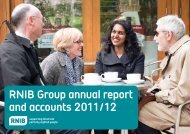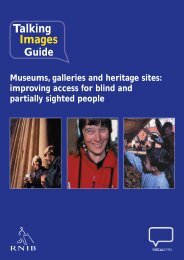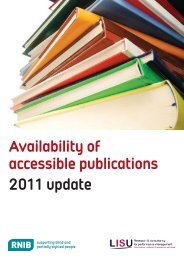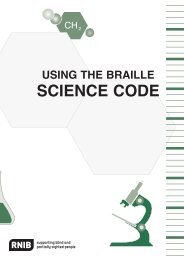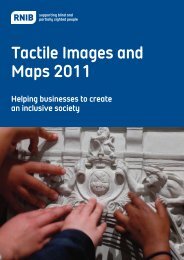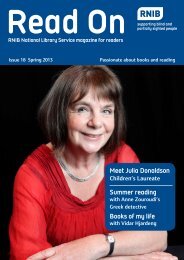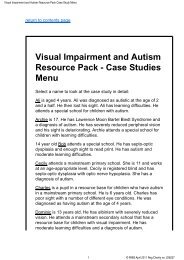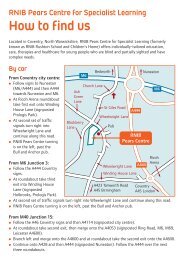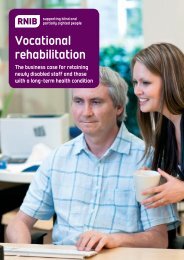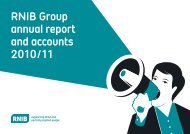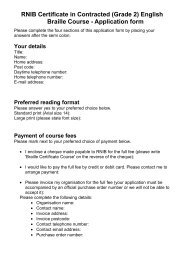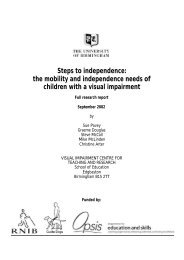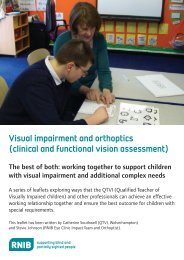Download Complete Report (PDF 1.19mb) - RNIB
Download Complete Report (PDF 1.19mb) - RNIB
Download Complete Report (PDF 1.19mb) - RNIB
You also want an ePaper? Increase the reach of your titles
YUMPU automatically turns print PDFs into web optimized ePapers that Google loves.
Executive summary<br />
3.3 Limited interest in and concerns about advanced functions<br />
Many blind, partially sighted and sighted participants showed no interest in<br />
advanced features, either because they felt they had no need for them or they<br />
currently used and were comfortable with alternative methods for features such as<br />
recording. Many blind and partially sighted participants expressed concern that<br />
advanced features were not accessible to them because these features rely heavily<br />
on the text display.<br />
3.4 Voice output greatly increases the ability of blind and partially sighted<br />
consumers to use digital radio equipment as independently as sighted<br />
consumers<br />
A major difference between how blind and partially sighted and sighted consumers<br />
use DAB radio is whether or not they can use their equipment independently. The<br />
research revealed that blind and partially sighted people can use radios with voice<br />
output more independently than they can use radios without voice output. Voice<br />
output provides audible (synthetic or recorded) speech feedback to the user in one<br />
or both of two ways. First a voice can confirm via speech, the buttons that a user<br />
presses or functions that a user alters. Second, a voice can read out the<br />
information that appears on the radio’s text display (eg station name, time, genre).<br />
Comparing matched samples, relative to sighted DAB users, blind and partially<br />
sighted users who do not have voice output on their radio were twice as likely to<br />
report needing help from another person to use their DAB radio. At first use, 90<br />
per cent of blind and partially sighted participants who were using a DAB radio<br />
without voice output reported needing help from someone else. This contrasted<br />
significantly with the much lower figure of 39 per cent of the nationally<br />
representative sample reporting needing help. For subsequent use of DAB radio,<br />
blind and partially sighted participants using a DAB radio without voice output<br />
were again significantly more likely than the nationally representative sample to<br />
report needing help (69 per cent versus 17 per cent).<br />
However, a much lower figure, namely 48 per cent of blind and partially sighted<br />
participants reporting on radios with voice output needed help from someone else<br />
at first use, and 26 per cent needed help for subsequent use. Voice output<br />
provided a level playing field, as these figures were not significantly different to<br />
those for the nationally representative sample. However, the numbers needing help<br />
were significantly higher for those blind and partially sighted participants reporting<br />
on use of a DAB radio without voice output.<br />
6



